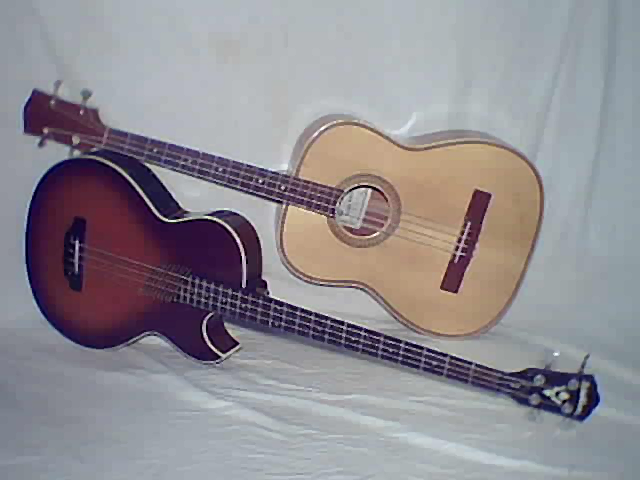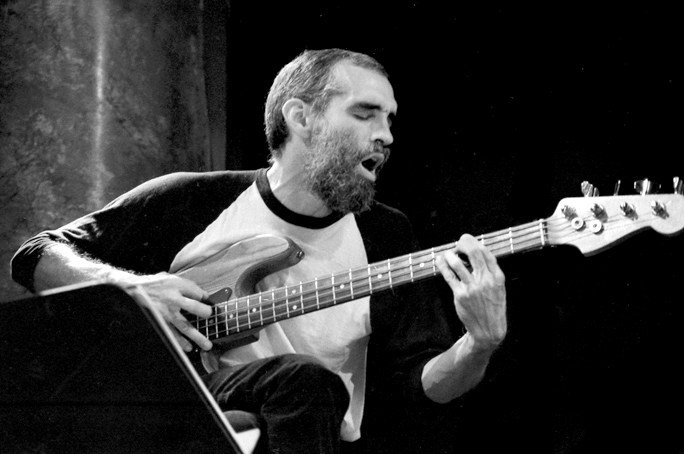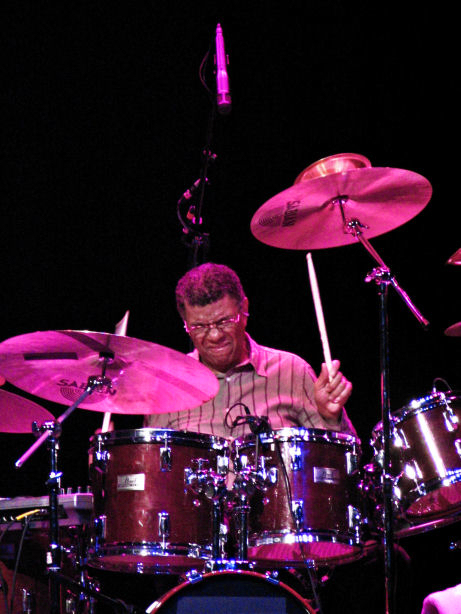|
Cosmic Chicken
''Cosmic Chicken'' is an album by Jack DeJohnette featuring Alex Foster (musician), Alex Foster, John Abercrombie (guitarist), John Abercrombie, and Peter Warren recorded in 1975 and released on the Prestige Records, Prestige label. accessed 1 September 2009 Track listing All compositions by Jack DeJohnette except where noted. # "Cosmic Chicken" – 4:53 # "One for Devadip and the Professor" – 3:35 # "Memories" – 5:58 # "Stratocruiser" – 7:28 # "Shades of the Phantom" – 6:13 # "Eiderdown" (Steve Swallow) – 5:35 # "Sweet and Pungent" – 3:32 # "Last Chance Stomp" – 7:07Personnel * Jack DeJohnette – drum kit, drums, piano, keyboard (instrument), keyboards * Alex Foster (musician), Alex Foster – alto saxophone, tenor saxophone * John Abercrombie ...[...More Info...] [...Related Items...] OR: [Wikipedia] [Google] [Baidu] |
Album
An album is a collection of audio recordings issued on compact disc (CD), Phonograph record, vinyl, audio tape, or another medium such as Digital distribution#Music, digital distribution. Albums of recorded sound were developed in the early 20th century as individual Phonograph record#78 rpm disc developments, 78 rpm records collected in a bound book resembling a photograph album; this format evolved after 1948 into single vinyl LP record, long-playing (LP) records played at revolutions per minute, rpm. The album was the dominant form of recorded music expression and consumption from the mid-1960s to the early 21st century, a period known as the album era. Vinyl LPs are still issued, though album sales in the 21st-century have mostly focused on CD and MP3 formats. The 8-track tape was the first tape format widely used alongside vinyl from 1965 until being phased out by 1983 and was gradually supplanted by the cassette tape during the 1970s and early 1980s; the populari ... [...More Info...] [...Related Items...] OR: [Wikipedia] [Google] [Baidu] |
Drum Kit
A drum kit (also called a drum set, trap set, or simply drums) is a collection of drums, cymbals, and other auxiliary percussion instruments set up to be played by one person. The player ( drummer) typically holds a pair of matching drumsticks, one in each hand, and uses their feet to operate a foot-controlled hi-hat and bass drum pedal. A standard kit may contain: * A snare drum, mounted on a stand * A bass drum, played with a beater moved by a foot-operated pedal * One or more tom-toms, including rack toms and/or floor toms * One or more cymbals, including a ride cymbal and crash cymbal * Hi-hat cymbals, a pair of cymbals that can be manipulated by a foot-operated pedal The drum kit is a part of the standard rhythm section and is used in many types of popular and traditional music styles, ranging from rock and pop to blues and jazz. __TOC__ History Early development Before the development of the drum set, drums and cymbals used in military and orchestral m ... [...More Info...] [...Related Items...] OR: [Wikipedia] [Google] [Baidu] |
1975 Albums
It was also declared the ''International Women's Year'' by the United Nations and the European Architectural Heritage Year by the Council of Europe. Events January * January 1 - Watergate scandal (United States): John N. Mitchell, H. R. Haldeman and John Ehrlichman are found guilty of the Watergate cover-up. * January 2 ** The Federal Rules of Evidence are approved by the United States Congress. ** Bangladesh revolutionary leader Siraj Sikder is killed by police while in custody. ** A bomb blast at Samastipur, Bihar, India, fatally wounds Lalit Narayan Mishra, Minister of Railways. * January 5 – Tasman Bridge disaster: The Tasman Bridge in Hobart, Tasmania, Australia, is struck by the bulk ore carrier , killing 12 people. * January 7 – OPEC agrees to raise crude oil prices by 10%. * January 10–February 9 – The flight of ''Soyuz 17'' with the crew of Georgy Grechko and Aleksei Gubarev aboard the ''Salyut 4'' space station. * January 15 – Alvor Agreement: Portugal a ... [...More Info...] [...Related Items...] OR: [Wikipedia] [Google] [Baidu] |
Jack DeJohnette Albums
Jack may refer to: Places * Jack, Alabama, US, an unincorporated community * Jack, Missouri, US, an unincorporated community * Jack County, Texas, a county in Texas, USA People and fictional characters * Jack (given name), a male given name, including a list of people and fictional characters with the name * Jack (surname), including a list of people with the surname * Jack (Tekken), multiple fictional characters in the fighting game series ''Tekken'' * Jack the Ripper, an unidentified British serial killer active in 1888 * Wolfman Jack (1938–1995), a stage name of American disk jockey Robert Weston Smith * New Jack, a stage name of Jerome Young (1963-2021), an American professional wrestler * Spring-heeled Jack, a creature in Victorian-era English folklore Animals and plants Fish *Carangidae generally, including: **Almaco jack **Amberjack **Bar jack **Black jack (fish) **Crevalle jack **Giant trevally or ronin jack **Jack mackerel **Leather jack **Yellow jack *Coho salmon, ... [...More Info...] [...Related Items...] OR: [Wikipedia] [Google] [Baidu] |
Acoustic Bass
The acoustic bass guitar (sometimes shortened to acoustic bass or initialized ABG) is a bass instrument with a hollow wooden body similar to, though usually larger than a steel-string acoustic guitar. Like the traditional electric bass guitar and the double bass, the acoustic bass guitar commonly has four strings, which are normally tuned E-A-D-G, an octave below the lowest four strings of the 6-string guitar, which is the same tuning pitch as an electric bass guitar. Because it can sometimes be difficult to hear an acoustic bass guitar without an amplifier, even in settings with other acoustic instruments, most acoustic basses have pickups, either magnetic or piezoelectric or both, so that they can be amplified with a bass amp. Traditional music of Mexico features several varieties of acoustic bass guitars, such as the guitarrón, a very large, deep-bodied Mexican 6-string acoustic bass guitar played in Mariachi bands, the león, plucked with a pick, and the bajo sexto, wi ... [...More Info...] [...Related Items...] OR: [Wikipedia] [Google] [Baidu] |
Electric Guitar
An electric guitar is a guitar that requires external amplification in order to be heard at typical performance volumes, unlike a standard acoustic guitar (however combinations of the two - a semi-acoustic guitar and an electric acoustic guitar exist). It uses one or more pickups to convert the vibration of its strings into electrical signals, which ultimately are reproduced as sound by loudspeakers. The sound is sometimes shaped or electronically altered to achieve different timbres or tonal qualities on the amplifier settings or the knobs on the guitar from that of an acoustic guitar. Often, this is done through the use of effects such as reverb, distortion and "overdrive"; the latter is considered to be a key element of electric blues guitar music and jazz and rock guitar playing. Invented in 1932, the electric guitar was adopted by jazz guitar players, who wanted to play single-note guitar solos in large big band ensembles. Early proponents of the electric guitar on ... [...More Info...] [...Related Items...] OR: [Wikipedia] [Google] [Baidu] |
Tenor Saxophone
The tenor saxophone is a medium-sized member of the saxophone family, a group of instruments invented by Adolphe Sax in the 1840s. The tenor and the alto are the two most commonly used saxophones. The tenor is pitched in the key of B (while the alto is pitched in the key of E), and written as a transposing instrument in the treble clef, sounding an octave and a major second lower than the written pitch. Modern tenor saxophones which have a high F key have a range from A2 to E5 (concert) and are therefore pitched one octave below the soprano saxophone. People who play the tenor saxophone are known as "tenor saxophonists", "tenor sax players", or "saxophonists". The tenor saxophone uses a larger mouthpiece, reed and ligature than the alto and soprano saxophones. Visually, it is easily distinguished by the curve in its neck, or its crook, near the mouthpiece. The alto saxophone lacks this and its neck goes straight to the mouthpiece. The tenor saxophone is most recognized for it ... [...More Info...] [...Related Items...] OR: [Wikipedia] [Google] [Baidu] |
Alto Saxophone
The alto saxophone is a member of the saxophone family of woodwind instruments. Saxophones were invented by Belgian instrument designer Adolphe Sax in the 1840s and patented in 1846. The alto saxophone is pitched in E, smaller than the B tenor but larger than the B soprano. It is the most common saxophone and is used in popular music, concert bands, chamber music, solo repertoire, military bands, marching bands, pep bands, and jazz (such as big bands, jazz combos, swing music). The alto saxophone had a prominent role in the development of jazz. Influential jazz musicians who made significant contributions include Don Redman, Jimmy Dorsey, Johnny Hodges, Benny Carter, Charlie Parker, Sonny Stitt, Lee Konitz, Jackie McLean, Phil Woods, Art Pepper, Paul Desmond, and Cannonball Adderley. Although the role of the alto saxophone in classical music has been limited, influential performers include Marcel Mule, Sigurd Raschèr, Jean-Marie Londeix, Eugene Rousseau, and Frederick ... [...More Info...] [...Related Items...] OR: [Wikipedia] [Google] [Baidu] |
Keyboard (instrument)
A keyboard instrument is a musical instrument played using a keyboard, a row of levers which are pressed by the fingers. The most common of these are the piano, organ, and various electronic keyboards, including synthesizers and digital pianos. Other keyboard instruments include celestas, which are struck idiophones operated by a keyboard, and carillons, which are usually housed in bell towers or belfries of churches or municipal buildings. Today, the term ''keyboard'' often refers to keyboard-style synthesizers. Under the fingers of a sensitive performer, the keyboard may also be used to control dynamics, phrasing, shading, articulation, and other elements of expression—depending on the design and inherent capabilities of the instrument. Another important use of the word ''keyboard'' is in historical musicology, where it means an instrument whose identity cannot be firmly established. Particularly in the 18th century, the harpsichord, the clavichord, and the early piano c ... [...More Info...] [...Related Items...] OR: [Wikipedia] [Google] [Baidu] |
Piano
The piano is a stringed keyboard instrument in which the strings are struck by wooden hammers that are coated with a softer material (modern hammers are covered with dense wool felt; some early pianos used leather). It is played using a keyboard, which is a row of keys (small levers) that the performer presses down or strikes with the fingers and thumbs of both hands to cause the hammers to strike the strings. It was invented in Italy by Bartolomeo Cristofori around the year 1700. Description The word "piano" is a shortened form of ''pianoforte'', the Italian term for the early 1700s versions of the instrument, which in turn derives from ''clavicembalo col piano e forte'' (key cimbalom with quiet and loud)Pollens (1995, 238) and ''fortepiano''. The Italian musical terms ''piano'' and ''forte'' indicate "soft" and "loud" respectively, in this context referring to the variations in volume (i.e., loudness) produced in response to a pianist's touch or pressure on the keys: the grea ... [...More Info...] [...Related Items...] OR: [Wikipedia] [Google] [Baidu] |
Steve Swallow
Steve Swallow (born October 4, 1940) is an American jazz bassist and composer, known for his collaborations with Jimmy Giuffre, Gary Burton, and Carla Bley. He was one of the first jazz double bassists to switch entirely to electric bass guitar. Biography Born in Fair Lawn, New Jersey, United States, Swallow studied piano and trumpet, as a child, before turning to the double bass at age 14. While attending a prep school, he began trying his hand in jazz improvisation. In 1960, he left Yale University, where he was studying composition, and settled in New York City, playing at the time in Jimmy Giuffre's trio along with Paul Bley. After joining Art Farmer's quartet in 1963, Swallow began to write. It is in the 1960s that his long-term association with Gary Burton's various bands began. In the early 1970s, Swallow switched exclusively to electric bass guitar, of which he prefers the five-string variety. Along with Monk Montgomery and Bob Cranshaw, Swallow was among the first j ... [...More Info...] [...Related Items...] OR: [Wikipedia] [Google] [Baidu] |
Jack DeJohnette
Jack DeJohnette (born August 9, 1942) is an American jazz drummer, pianist, and composer. Known for his extensive work as leader and sideman for musicians including Charles Lloyd, Freddie Hubbard, Keith Jarrett, Bill Evans, John Abercrombie, Alice Coltrane, Sonny Rollins, Miles Davis, Joe Henderson, Michael Brecker, Herbie Hancock and John Scofield, DeJohnette was inducted into the ''Modern Drummer'' Hall of Fame in 2007. He has won two GRAMMY awards and been nominated for five others. Biography Early life and musical beginnings DeJohnette was born in Chicago, Illinois, to Jack DeJohnette (1911–2011) and Eva Jeanette DeJohnette (née Wood, 1918–1984).Stephen L. Barnhart, ''Percussionists: a Biographical Dictionary'' (Westport, CT: Greenwood Press, 2000), 88. Although of predominantly African American heritage, he has stated that he has some Native American ancestry, specifically Seminole and Crow. He began his musical career as a pianist, studying from age four and first ... [...More Info...] [...Related Items...] OR: [Wikipedia] [Google] [Baidu] |







